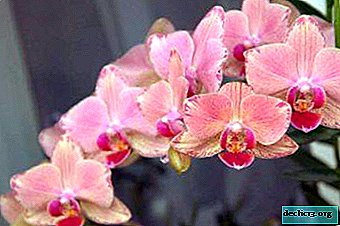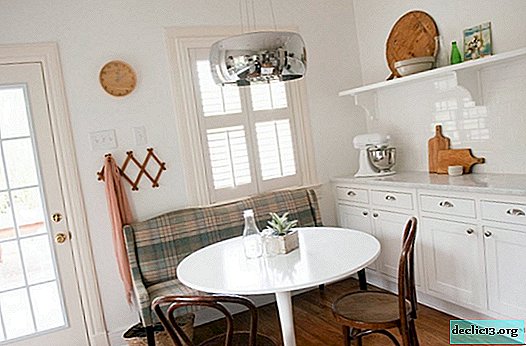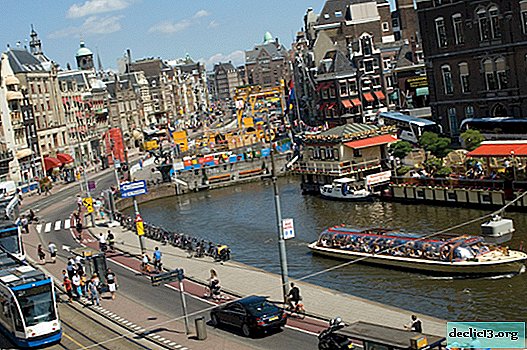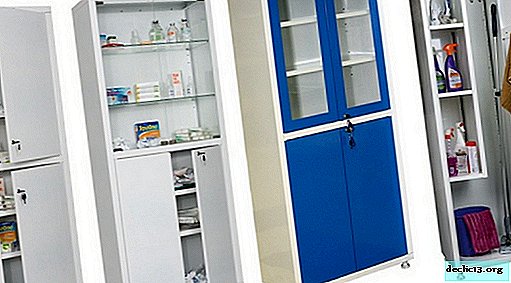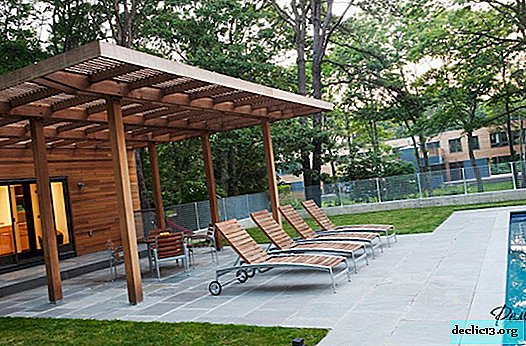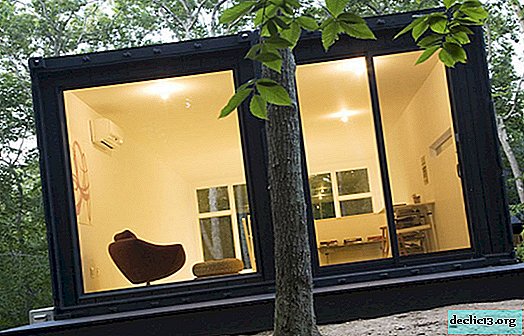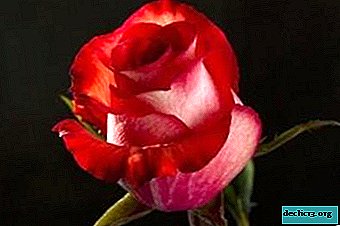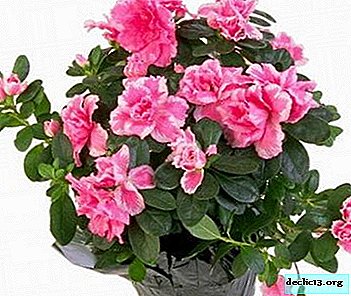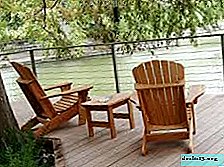How to plant balsam glandular? What diseases and features of his care can be
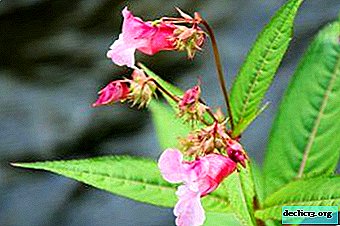
Ferruginous balsam is one of the worthy representatives of the large balsamic family.
Popularly, the plant is called Untouched, and in the conditions of cultural floriculture it is intended for cultivation in open areas.
In the article, we consider the features of this plant, find out how to plant glandular balsamin properly, how to care for it, and how to propagate it better.
Description
Ferruginous balsam, or simply, Impatiens - a guest in our gardens from Africa and Asia. The plant is a good honey plant, is an annual. Note, however, that this plant is poisonous, and is not very suitable for growing in gardens where children run and pets.
This type of plant is the largest of all balsamic ones. This is a wild plant, therefore it is suitable only for garden cultivation, and is not intended for indoor floriculture. The plant is loved by gardeners and landscape designers for its decorativeness and unpretentiousness: the glandular balsam looks great both in single and in group plantings, it can decorate with itself curbs, rabatka, flower beds.
Important! This type of balsam, unlike its southern counterparts, is found in our country in the wild. Its origin, in any case, is southern, but this species, being cultivated at one time, was able to take root in our climate, and eventually, due to self-sowing reproduction, “run wild”.The plant blooms from July until the onset of the first frost.
Appearance
 The plant reaches a height of two meters: its stems are straight, thick, juicy. The leaves are located at an equal distance from each other, alternately, have a shiny, smooth surface, serrated edges. The length of a normal balsam leaf is about 10 cm.
The plant reaches a height of two meters: its stems are straight, thick, juicy. The leaves are located at an equal distance from each other, alternately, have a shiny, smooth surface, serrated edges. The length of a normal balsam leaf is about 10 cm.
Ferruginous balsam is valued in gardening for its decorative flowers. The color of the petals is pink - it is both pale and bright, saturated. The inflorescences themselves are quite large, gather in decorative tassels, which further increase the effectiveness of the plant. The length of one petal is about 3-3.5 cm.
Note the delicate aroma of this plant, it is due to its smell that glandular balsamine attracts many pollinating insects, and is a wonderful honey plant.
Landing
We will get acquainted with the peculiarities of planting this decorative plant, find out how to choose the right site for balsam, how to plant it.
Location and Lighting
Ferruginous balsamine - a rather thermophilic plant: affected by its tropical origin. Therefore, when growing it from seeds, seedlings are transferred to a permanent place only when the threat of night frosts completely passes.
The thermophilicity of balsam limits the possibilities of its use in landscape design. As an early decoration of the garden in spring, it definitely does not fit.
Advice! If you plant several balsam at once, you should maintain a distance between the bushes of about 25 cm. It must be borne in mind that adult balsam is quite high.The plant loves good lighting and enough warmth. Diffused light is best suited, rather than direct sunlight. The bed where the balsam is planted should be reliably sheltered from the wind and drafts.
The plant does not tolerate thickened plantings: balsam needs enough space for full growth and flowering. In addition, balsam sucks a lot of nutrients from the soil and with thickened plantings, all trace elements are simply not enough for all plants. If we still allow thickening of the plantings, the balsamic bed will become stunted, and flowering will stop soon after the buds open.
The soil
 Although balsam is ferruginous and is not very demanding on the composition of the soil, it is better to feel, grow and bloom on fertile soil. It is recommended to add peat to the soil to make the soil more nutritious and loose. Many gardeners also add river sand to make the substrate even easier.
Although balsam is ferruginous and is not very demanding on the composition of the soil, it is better to feel, grow and bloom on fertile soil. It is recommended to add peat to the soil to make the soil more nutritious and loose. Many gardeners also add river sand to make the substrate even easier.
Acidic soil is not suitable for balsam: the soil should be as close as possible to a neutral acidity index. It is recommended to add ash or lime to the soil if the soil on the bed is too acidic. The optimal pH of the reaction is 5.5-6.3.
For this plant, the nutritional qualities of the soil are very important. In sparse soil, the bush will never reach its standard two-meter growth, and its flowering will not be decorative enough.
Care Features
After planting, you need to properly care for the plant so that it pleases for a long time with its spectacular flowering. Next, consider the main points of care.
Watering
Drought is unacceptable for balsam, because under such conditions, the leaves begin to fall. Balsamin needs a lot of water: in summer in hot weather the soil on the bed should be constantly moistened. The usual watering scheme: once a day in the heat and once every two days at a cool temperature.
Attention: do not let the substrate dry out so that the balsam does not lose its decorative effect.Top dressing
During the period of active growth, glandular balsam suffers from a lack of nutrients. Therefore, feeding this plant is necessary: minerals should be added about once every ten days.
When buds begin to form, top dressing with nitrogenous compounds should be stopped. The fact is that nitrogen has a good effect on the rapid growth of leaves, but it affects the flowering negatively. It is better to feed balsamine during flowering with phosphorus and potassium.
When autumn comes, feeding should be stopped. Since balsam glandular is an annual, after flowering in dressings no longer makes sense.
Diseases and Pests
 Ferruginous balsam may well be infected by both diseases and harmful insects. Next, we consider which of the threats pose the greatest danger to this plant.
Ferruginous balsam may well be infected by both diseases and harmful insects. Next, we consider which of the threats pose the greatest danger to this plant.
But immediately we note that the greatest threat to this flower is not viruses and fungi, but rather, low temperatures outside. If the temperature drops to +5 degrees, and even more so if at least short-term frosts occur, balsam will not survive.
As for harmful insects, then for this plant the greatest danger is:
- spider mite;
- aphid;
- whitefly.
Fight insects with insecticides.
Growing problems
Ferruginous balsam loves good care. And in the absence of one, it can react in a negative way, lose its decorative effect. Next, we find out what problems can arise when growing this plant, and what to do with these problems.
Bud drop
This fact indicates a lack of moisture in the soil or air. To stop the process, water the balsam, and spray air around it.
Does not bloom
If the plant refuses to bloom, the reason is most likely an overabundance of nitrogenous fertilizers. Sometimes the reason is poor, sparse soil. To correct the situation, nitrogen should be excluded from top dressing, and emphasis should be placed on potassium-phosphorus additives.
Falling leaves
With this symptom, the flower responds to any blemishes in the care: the lack of lighting, heat, water, nutrients. With natural aging of the plant, its leaves also fall.
Withering
In this case, the cause can be both relatively safe and lack of water, or be fatal, consisting in rotting of the roots.
Breeding
Ferruginous balsam can be propagated by seeds and cuttings. Let's consider both ways.
Cuttings
Due to the possibility of grafting from the annual balsam, you can make a perennial (for more details on what is an annual and perennial balsam, read here). To do this, you must:
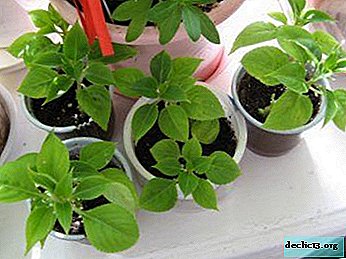 At the end of summer, cut the apical stem from the parent plant.
At the end of summer, cut the apical stem from the parent plant.- After cutting, the stalk is rooted in moist sand, water or in moistened perlite.
- As soon as the roots appear, the plant can be transplanted into the ground with a standard composition for an adult specimen.
- In the spring, after the threat of frost has passed, the stronger stalk is transplanted to the garden.
Note that it is possible to cuttings not only in the autumn, but also in the summer, using new plants to increase the total number of shrubs on the site, and to obtain more lush, decorative greenery.
Seeds
- To propagate the flower with seeds, the latter are planted in moist soil.
- The box with seeds must be covered with polyethylene to create more suitable greenhouse conditions for them.
- When the shoots appear, the film must begin to be slowly removed, gradually hardening the shoots.
- After the frost on the street stops, the sprouts are transplanted to the garden. The first days after transplantation, it is recommended to close the garden bed with foil, so that the adaptation of seedlings to the street goes more smoothly.
Conclusion
So, we got acquainted with the features of growing such a garden plant, so balsam glandular. This representative of the southern flora is quite thermophilic., but in the care is not too picky, so the gardener will not deliver much trouble. But its decorative flowering can bring a lot of pleasure to both the owner of the balsam and its guests, ordinary passers-by.

 At the end of summer, cut the apical stem from the parent plant.
At the end of summer, cut the apical stem from the parent plant.